biomimicry
Latest
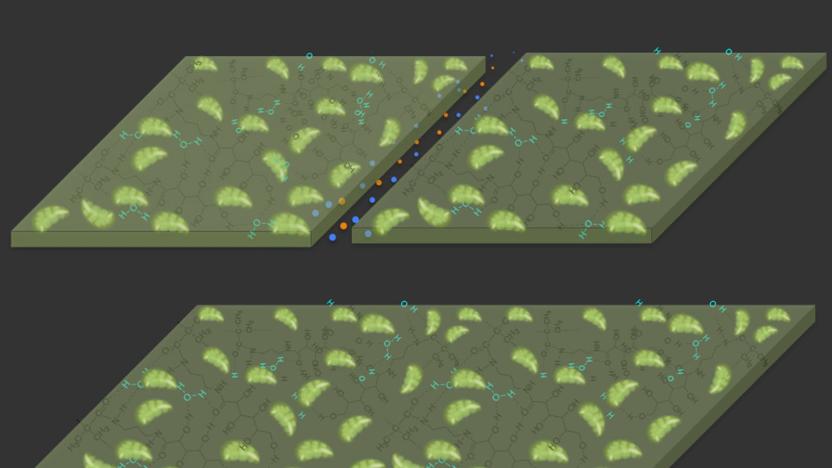
Self-repairing material plucks carbon from the air
Scientists might have a particularly clever way to help the environment: they've developed a material that can not only heal itself, but could reduce CO2 levels in the process. The substance uses its combination of a gel-like polymer with chloroplasts (cell elements that handle photosynthesis in plants) to grow by snatching carbon from the air after exposure to light. If you cracked or scratched an already-solidified piece of this material, the newly exposed sides would promptly expand and fill the gap without requiring heat, ultraviolet light or other special reactions like you see with existing self-healing products.

Material with eagle-like grasp could lead to grippier robot hands
Most materials bulge out when you squeeze them, pushing the energy outside. But that's not always what you want -- wouldn't it sometimes be better for them to collapse and hold the energy inside? These exotic materials (known as auxetics) already exist on a basic level, but they tend to be so fragile that you can only use them once. A team of UK scientists may have a better way: they've designed auxetic materials that can repeatedly collapse and store energy many times without breaking or expending additional energy, grabbing on much like an eagle's talon.
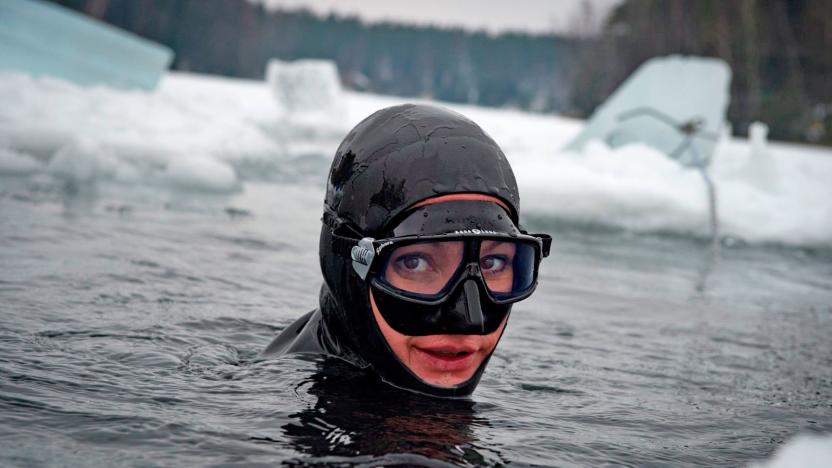
Synthetic 'blubber' could triple divers' survival time in icy water
Even the hardiest diver can't last longer than an hour in cold water using a modern wetsuit, and that's no good if you're a special ops soldier or otherwise need to stay under the sea for hours at a time. MIT has a simple solution: imitate the blubber that keeps seals and polar bears safe. They've developed an "artificial blubber" that promises to extend swim times in chilly water (under 50F) to as long as three hours. The approach combines a newly processed material with pockets that keep the cold out.
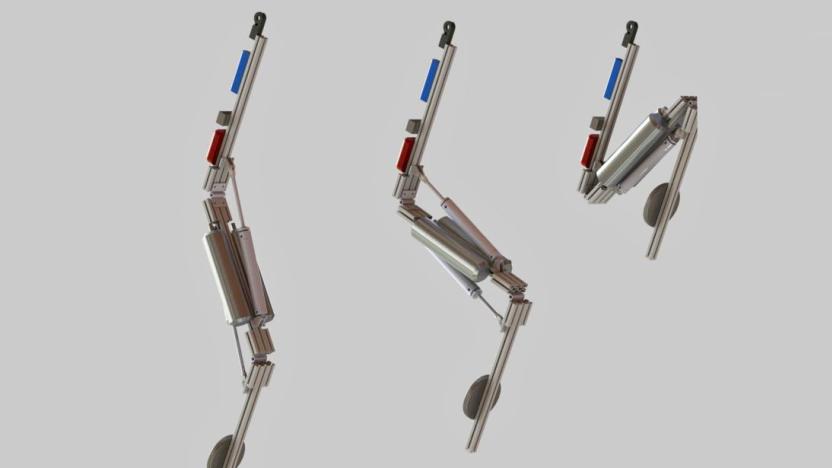
Disney's acrobatic robot can backflip like a human
Humans have mastered acrobatics for centuries, but robots? They've barely learned how to jump, and Disney Research wants to fix that. It recently developed a human-scale robot, Stickman, that can perform aerial stunts with a grace closer to that of its fleshy counterparts. Much like a person, it tucks into a ball in mid-flight to perform backflips and other stunts. A combination of inertial motion sensing and a trio of laser rangefinders give the robot motion and height data that help it decide when to untuck and land safely.

Scientists study jumping spiders to create agile robots
However creepy jumping spiders might be, they're undoubtedly biomechanical marvels: they can jump up to six times their body length from a complete stop. Wouldn't that be handy for robots, which don't always have the luxury of a running start? University of Manchester researchers think so. They're using a combination of CT scans and high-speed cameras to analyze the movement of a jumping spider (affectionately named Kim) and see how it could translate to robotics. The team both captured Kim's jumps in slow motion and produced a 3D model to understand the arachnid's body and leg structure at an "unprecedented" level of detail.

Medics may slow biological time to save soldiers' lives
Battlefield medics frequently only have a brief window of opportunity to treat an injury before it's fatal or causes permanent disabilities, and it's frequently so fleeting that there's not much they can do. DARPA is exploring an unusual solution to that problem: slow the biological processes to give medics more room to breathe. Its new Biostasis research program aims to bring cell activity to a near halt by using biochemicals that control energetics at the protein level. If animals like tardigrades and wood frogs can stabilize their cells to survive freezing and dehydration, similar techniques might offer more time to medics who want to treat wounds before a victim's vital systems break down.
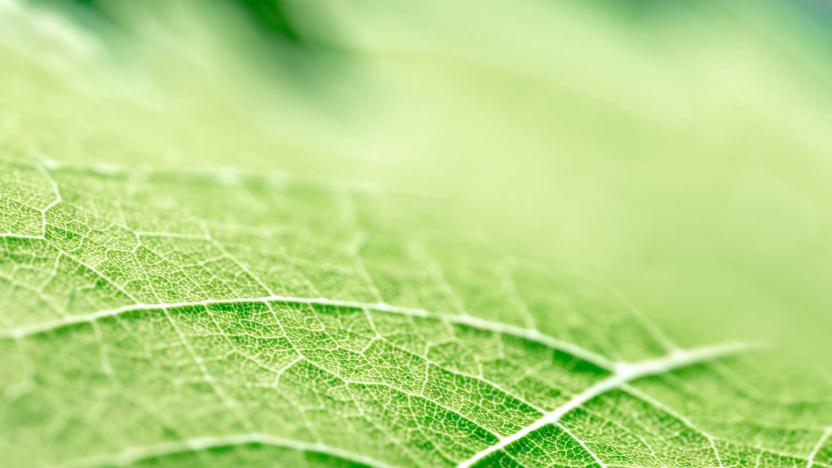
Leaf veins may lead to longer battery life
There have been many, many discoveries that promise longer battery life, but one of the latest is rare in taking its inspiration from one of the most common structures in nature: the leaf vein. Scientists have crafted a porous material that mimics the highly optimized flow of nutrients in plant leaves. The team used an evaporation-based process to arrange zinc oxide nanoparticles into networks with pores of various sizes that behave like you'd expect in a leaf, maximizing the transfer of material while minimizing the necessary energy.

Soft manta ray robot could watch over coral reefs
It looks like Harvard's octopus robot is going to have some stiff competition. Chinese researchers have crafted a soft manta ray-inspired bot that could surveil the seas without harming nature in the process. Rather than rely on stiff metal or plastic for its body, the artificial swimmer is made out of a combination of flexible polymer (for its muscles) and silicone (for most everything else) that shouldn't damage sea life. And importantly, there's no motor -- the ray gets around using a lithium battery whose cyclic voltage causes the muscles to bend, flapping fins in the process. Electromagnets help steer the tail.
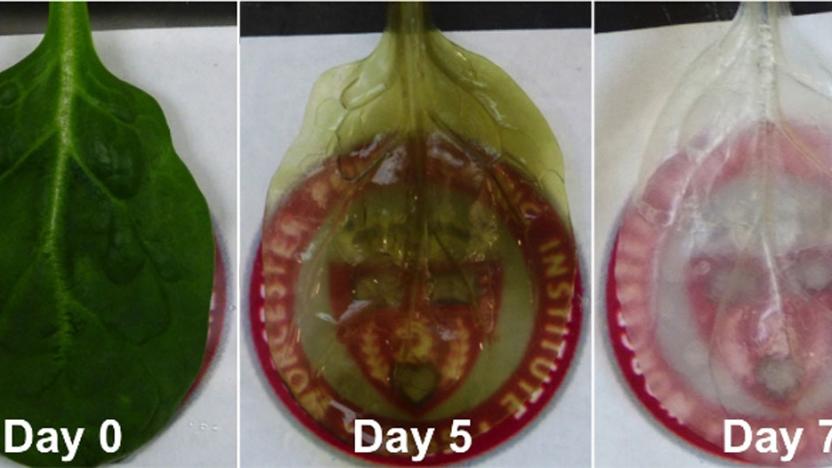
Scientists turn spinach into a farm for human heart cells
In the future, you might not have to resort to exotic materials to create heart cells -- you could just raid your grocery store's produce section. Scientists have invented a process that turns spinach leaves into farms for functioning human heart cells. The team started by pumping a detergent solution through the spinach, stripping it of its plant cells and turning it into a ghostly shell made mostly of cellulose. After that, they cultured heart cells on the remaining structure, sending both fluids and microscopic beads through the vegetable's now-empty veins in order to feed the new cells.
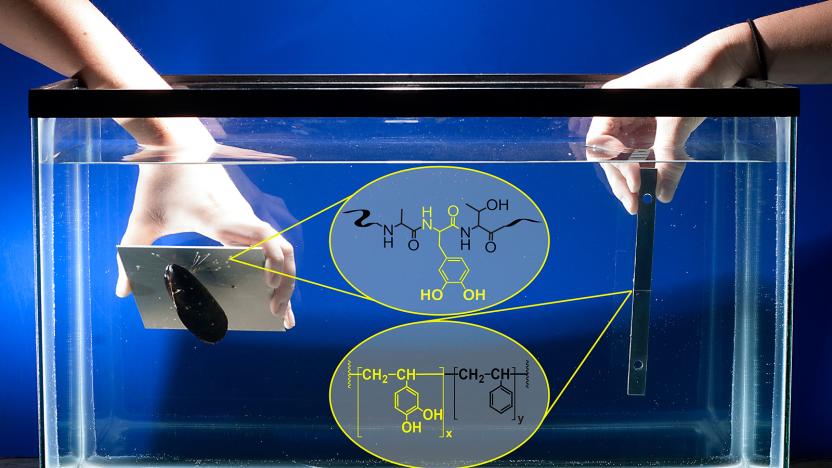
Shellfish-inspired glue stays sticky underwater
Even the strongest human-made glue tends to fail when you dunk it underwater. Purdue researchers, however, think they have a simple solution to this: imitate nature. They've developed a polymer adhesive that's based on the proteins mussels use to cling to rocks. The team's synthetic creation takes advantage of compounds inside the proteins' amino acids to bind directly to an intended surface, rather than interacting with water on the surface. The result is a material that not only outperforms the glue you see in the hardware store, but is 17 times stronger than the shellfish's own adhesive -- and that has scientists scratching their heads.
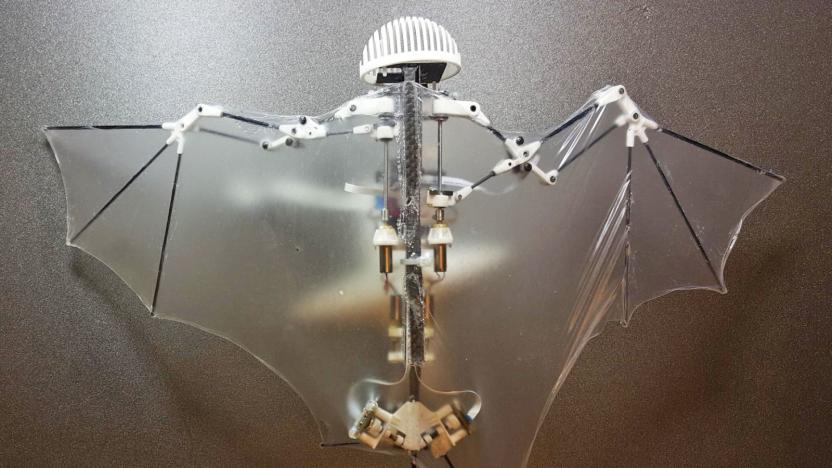
Bat Bot is an autonomous drone that mimics a bat's flight
For roboticists working in the field of biomimetics, copying a bat's complex flight patterns has been a difficult problem to solve. Or, as Caltech professor and Jet Propulsion Laboratory researcher Soon-Jo Chung put it during a press conference, "bat flight is the holy grail of aerial robotics." And according to a new research paper published by Chung and his JPL colleagues in the journal Science Robotics this week, that holy grail has officially been discovered.
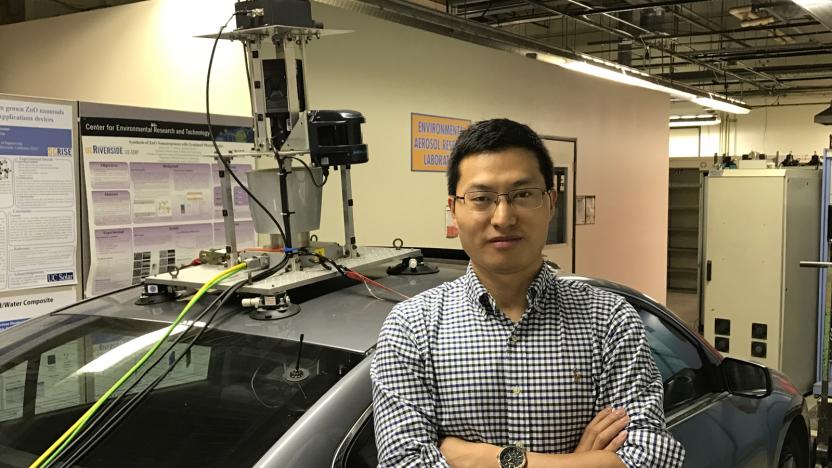
Hybrid cars can save fuel through nature-like algorithms
Plug-in hybrid cars aren't as efficient as they could be. While starting in a pure electric mode is good for relatively short trips, it actually hurts your fuel economy if you have to switch to the gas engine. Science may have a solution, though, and it's taking its cue from nature. University of California, Riverside researchers have developed evolutionary algorithms that learn to combine electric and gas power for maximum fuel economy. The approach mimics natural energy-saving processes to invoke the electric motor throughout the trip, and adapts based on your driving conditions -- it should help whether you're stuck in downtown traffic or cruising effortlessly on the highway.
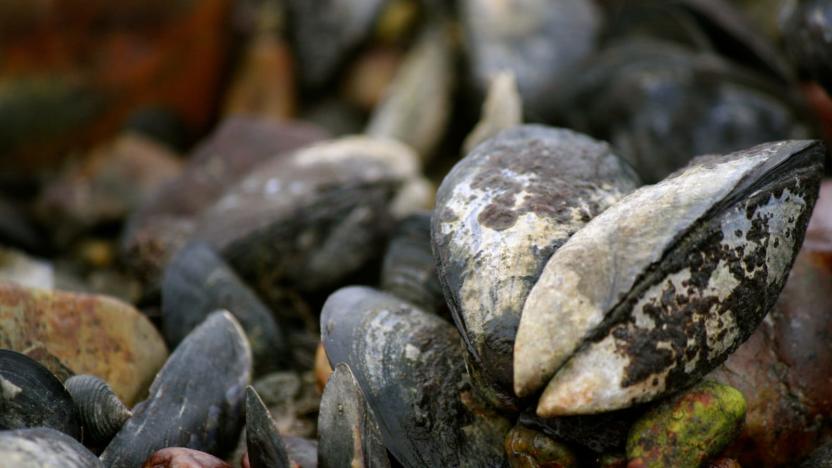
Robot mussels help measure the effects of climate change
The mussels you see on the shoreline might not just be soaking up some rays... they could be key to studying climate change. An research team has published data from robotic mussels whose sensors have been collecting temperatures for the past 18 years in a bid to monitor climates around the world. By recording the body heat of the real mussels around them every 10 to 15 minutes, the artificial sea life can track and predict global warming in situations where it's most likely to have a pronounced effect. Mussels are highly dependent on air temperature and sunlight for warmth, so they're more reliable gauges of an ecosystem's health than many other techniques. If they're too hot, something is likely wrong.

Six robots inspired by real-life animals
By Cat DiStasio Many scientific and engineering developments were lifted right out of nature, but none more so than robots built to act like real-life animals. Biomimicry is the term for innovations like these, which draw inspiration from the power of nature to solve the toughest human problems. Robots can take on some pretty unlikely tasks, from pollinating flowers as bee populations decline to detecting pollution in waterways. Other robots are designed purely for fun, like this 12-legged robot that walks like a crab and is powered by the sun.

Moth eyes inspire solar cells that work indoors
As a rule, most solar cells need to catch direct sunlight. Even those that work indoors can only do so much to generate power from artificial light sources. However, British researchers have found a clever (and decidedly) unusual way to harvest energy while inside: by imitating moths. They've created a graphene-based material that traps electromagnetic waves much like a moth's eye, making it one of the most energy-absorbent substances to date. With the right antennas, it could produce energy from not just sunlight, but any device that emits microwave or radio waves -- your smartphone could help power your smartwatch.

Frozen oil could be the key to shapeshifting materials
Those odd, glowing shapes may look like they're straight out of a weird puzzle game, but don't laugh... they may be crucial to a future of ever-changing materials. British and Bulgarian scientists have discovered that oil droplets will form octagons, triangles and other not-so-natural shapes if you slowly freeze them while they're in a soapy solution. On top of that, they'll revert to their original states if you warm them back up. The results are more than a little odd, as you can see here -- they're non-living chemicals taking on artificial shapes in a lifelike way.

Researchers use video games to test chameleons' vision
You probably know that a chameleon's eyes move independently of one another. Thanks to video games, however, it's clear that this oddball vision is more powerful than previously thought. Israeli researchers made chameleons play a simple game where they had to track and lash out at multiple digital flies, gauging their ability to focus on two objects at once. In the tests, the lizards easily followed one target in each eye -- they only focused on one fly when they were ready to strike. The eyes even have distinctive movement patterns based on their active roles, so there's no doubt as to what they're doing.

Swans help create smoother camera drone videos
The next time you see a graceful, dramatic video shot by a camera drone, you may have a swan to thank for the absence of any jittery footage. Stanford University researchers are developing camera suspension technology inspired by whooping swans, whose heads remain remarkably still even when they're making aggressive in-flight maneuvers. Thanks to a blend of high-speed video and computer modeling, the scientists discovered that the swan's neck acts much like a vehicle's suspension, passively countering the effects of flapping wings or headwinds. It'll likely take a while before the nature-inspired design reaches something you can buy, but you may well see a day where drones are producing sharp, stable video even when they're traveling at high speeds or facing strong gusts. [Image credit: AP Photo/Sergei Grits]

13 scientific breakthroughs inspired by nature
Biomimicry, the field of science that takes direct R&D cues from nature's own solutions, has provided us with breakthrough materials, inspired developments in robotic locomotion and informed new medical techniques. We've even gotten introspective and looked at our own biological functions in order to create useful technologies. We're bootstrapping our way into the future on the back of nature's hard work, and that's a good thing, so long as we tread cautiously without manufacturing our own obsolescence. Of the myriad advances, we've collected just a few that exhibit how nature's influence is helping us craft our own future.

Nano-sized 'yolks' should lead to longer-lasting batteries
Those eggs you might have had for breakfast? They're not just food -- they may be the key to longer-running batteries in your devices. Scientists at MIT and Tsinghua University have developed a nanoparticle battery electrode whose egg-like design is built to last. Their invention, which houses a shape-changing aluminum "yolk" in a titanium dioxide cell, can go through charging cycles without degrading like the graphite electrodes in conventional power packs. That could improve not only the overall longevity of the battery, but also its capacity and maximum power. You'd have gadgets that not only hold out for longer between charges, but don't need to be replaced quite so often under heavy use.


